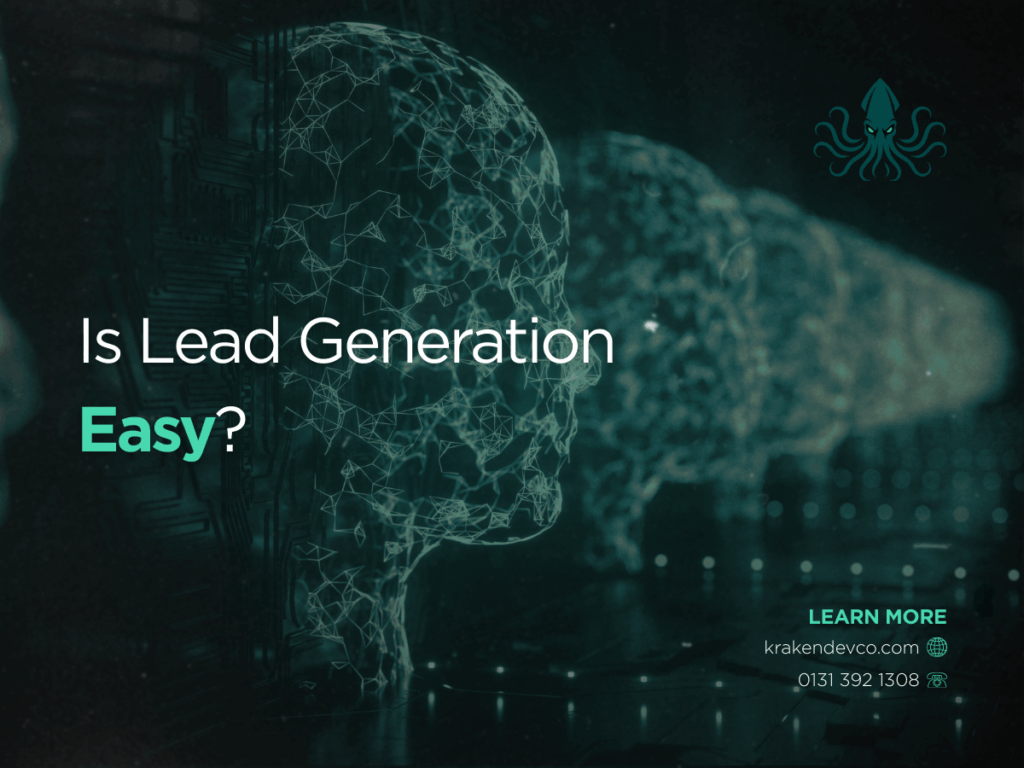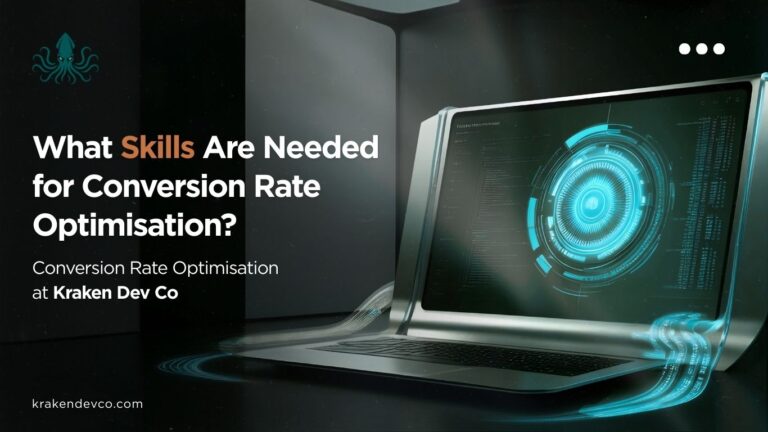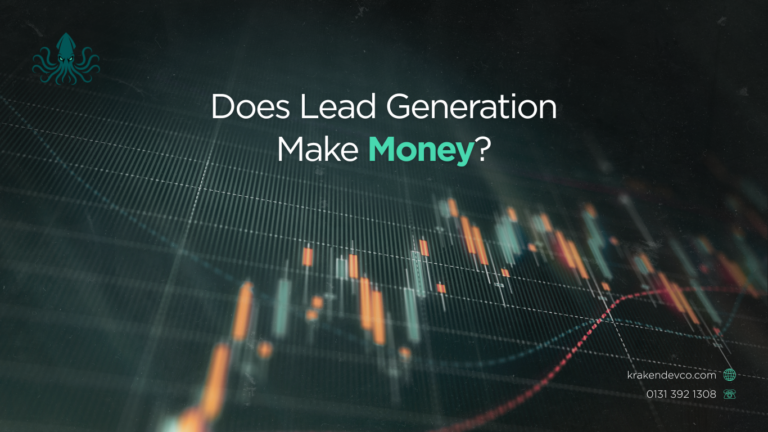
Lead generation: everyone’s talking about it, few are getting it right. So here’s the question—if lead generation is so simple, why are 80% of marketers still struggling with it?
The truth is, lead generation isn’t about working harder or spending more—it’s about clarity, strategy, and execution. At Kraken Dev Co, we’ve worked with countless B2B firms to build lead engines that actually work. No gimmicks. No guesswork. Just results.
Let’s break down why lead generation in 2025 still matters, where most businesses go wrong, and how to build a smarter, more sustainable pipeline—one that turns attention into revenue, without spinning your wheels.
Why Lead Generation Still Matters (Even More Than You Think)
If your business isn’t generating leads, it isn’t growing. Full stop.
B2B sales cycles are longer than ever. The market is saturated, distractions are endless, and your ideal customer is likely comparing five different vendors before they even speak to a sales rep.
That’s why you need a lead generation engine—a system, not a scattershot of tactics. It’s not just about getting attention; it’s about converting that attention into intent, and eventually into revenue.
What Is a Lead—and Why the Label Matters
A lead is someone who’s expressed interest in your product or service. That could mean downloading a guide, signing up for a free trial, watching a demo, or engaging with your content.
But interest is not the same as intent. That’s where segmentation becomes essential. Here’s what actually matters:
- MQL (Marketing Qualified Lead): Engaged with your content but not yet sales-ready.
- SQL (Sales Qualified Lead): High-intent, ready for a sales conversation.
- PQL (Product Qualified Lead): Has used your product and is likely ready to upgrade.
- Service Qualified Lead: Existing customer looking to expand or add services.
These aren’t vanity acronyms. They inform your nurture strategy, your handoff to sales, and your expectations around conversion timelines.
The Five Steps to Smarter Lead Generation
There’s no magic formula. But there is a reliable process that works time and again:
1. Attract
Drive targeted traffic using SEO, paid ads, social content, and partnerships. If no one’s finding you, nothing else matters.
2. Capture
Use landing pages, forms, and chat to collect lead data. Make the exchange of information feel natural and worthwhile.
3. Nurture
Guide prospects with relevant content, email sequences, and retargeting. Stay present without overwhelming.
4. Qualify
Score leads based on behaviour and firmographics (e.g. job role, industry). Know who’s worth the call.
5. Convert
Deliver sales offers, demos, and trials at the right moment. Focus on value, not volume.
And above all—measure everything. What gets measured gets improved.
Inbound vs Outbound: Not Either/Or—You Need Both
Inbound: Warms Them Up
Inbound marketing builds trust. It’s a slower burn, but leads that come through this route tend to convert better. Think:
- SEO content mapped to buyer intent
- Lead magnets that offer real value
- Behaviour-triggered email sequences
- LinkedIn thought leadership
Outbound: Speeds Things Up
Outbound gives you control over volume and targeting. When aimed precisely, it cuts through the noise:
- Cold emails tailored to job roles and industries
- Well-crafted LinkedIn DMs
- Paid ad campaigns with direct CTAs
- Targeted outreach to high-value accounts
Hybrid: Where the Magic Happens
The most effective campaigns use both. For example:
- Retargeting ads after someone downloads your content
- Post-webinar follow-up emails with a time-sensitive offer
- ABM (Account-Based Marketing) campaigns using first-party data
This layered approach balances quality with scale.
Funnel Focus: Speak to the Right Stage
Don’t treat every visitor the same. Align your content with where the prospect is in their journey:
TOFU (Top of Funnel)
- Goal: Attract attention
- Content: Blogs, videos, social posts
- Tactic: Help, don’t pitch
MOFU (Middle of Funnel)
- Goal: Build trust and qualify interest
- Content: Case studies, comparison tools, webinars
- Tactic: Show value, solve mid-stage problems
BOFU (Bottom of Funnel)
- Goal: Convert
- Content: Product demos, free trials, ROI calculators
- Tactic: Address objections, reinforce outcomes
Tools That Help—But Don’t Think They’ll Do the Work for You
A tech stack can’t fix a broken strategy. But it can scale what’s already working.
- Leadfeeder: Identifies anonymous site visitors
- HubSpot: Great all-in-one CRM and automation platform
- Instantly: Helps scale outreach (with warm-up features)
- Zendesk Sell: Keeps sales pipelines clean and easy to manage
- GA4: Funnel tracking and behavioural insights
- LinkedIn Ads: B2B targeting where it counts
Use tools to speed up the right work—not replace thinking.
Capture That Counts: Make Your Site Work Harder
Too many businesses lose leads because their capture strategy is clunky or disconnected. Here’s what works:
Forms
- Keep them short—only ask for what you’ll use
- Explain why you’re asking for information
- Use progressive fields for returning visitors
Chat
- Deploy bots on high-intent pages (like pricing)
- Route qualified conversations straight to sales
- Offer downloads or calendar links in the chat flow
Visitor Identification
- Tools like Leadfeeder reveal who’s browsing—even without form fills
- Great for ABM follow-up and retargeting
Qualify Without Wasting Time
Don’t treat every lead like gold. Treat the right ones like gold.
Step 1: Define Your Ideal Lead
Use real data—role, industry, company size, past behaviour.
Step 2: Score Leads Logically
Automate this in your CRM. Prioritise leads that align with real buyer actions.
Step 3: Route Leads Intelligently
Only SQLs go to sales. Everyone else should be nurtured or retargeted.
No Traffic, No Funnel
You can’t convert what you don’t attract. Simple as that.
Organic SEO
- Focus on keywords with clear intent
- Update old content and optimise regularly
- Write for people first, algorithms second
Paid Ads
- Run targeted campaigns on Google and LinkedIn
- Test ad creative and landing pages monthly
- Use retargeting to stay visible to interested prospects
Co-Marketing
- Partner with aligned, non-competing firms
- Share content, co-host events, publish joint guides
Build awareness through borrowed trust, not just traffic.
Common Mistakes That Still Drain Budgets
- Generic CTAs (“Learn more”) that mean nothing
- No qualification process—sending junk to sales
- Content that sells too early—turns off cold traffic
- Marketing and sales not aligned—leads get lost in the cracks
These aren’t minor issues. They sabotage entire pipelines.
What Should You Track?
Vanity metrics don’t move the needle. These do:
- Conversion Rate: % of visitors turning into leads
- Lead-to-Customer Ratio: Quality over quantity
- Cost Per Lead: Is this scalable?
- Time to Close: Is your funnel too long—or just broken?
Track what matters. Improve what isn’t working. Drop what doesn’t serve your strategy.
The Final Word: Treat Lead Generation as a System, Not a Slogan
Businesses that thrive in 2025 won’t do more—they’ll do better.
- Inbound warms the lead
- Outbound accelerates reach
- Qualification saves time
- Content drives action
- Strategy ties it all together
You don’t need to gamble with lead generation. You need to build it deliberately.
Let’s Build Your Lead Engine
Tired of second-guessing your pipeline? At Kraken Dev Co, we don’t sell fluff. We build lean, strategic lead systems that work. Systems designed around your goals—not someone else’s template.
Let’s talk outcomes. Not tactics. Start here
Suggested Visual Asset
Infographic Title: The Anatomy of a High-Quality Lead
Visual Sections:
- Awareness signals (video watch %, scroll depth)
- Capture actions (form fill, chatbot use, trial signup)
- Qualification cues (content type, job title, lead score)
- Follow-up actions (email clicks, demo requests)
Caption Style:
“Not all leads are equal. Here’s how to spot the ones worth your time.”
“Filter fast. Focus hard.”
Design Aesthetic:
Kraken Real, Off Black, Electric Blue
Clean icons, white space, sharp typography.



